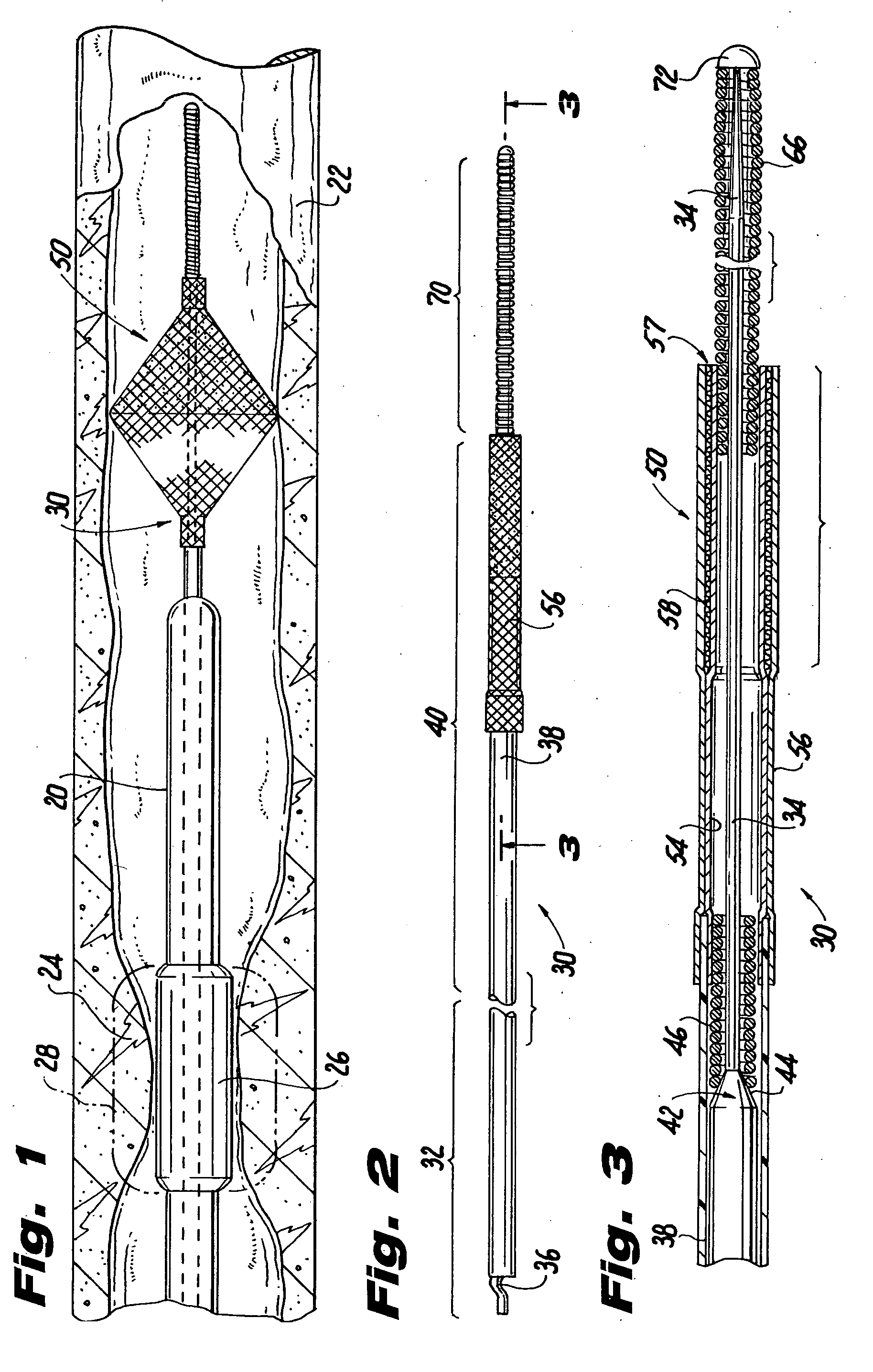Temporary vascular filter guide wire
a technology of filter guide wires and vascular filters, applied in the field of vascular filters, can solve the problems of inability to adjust during the procedure, inability to use balloon catheters and stent devices involving the same procedure, and inability to achieve filter protection in place, so as to achieve the effect of reducing complexity and facilitating modification of relative spacing between the filter and the lesion location
- Summary
- Abstract
- Description
- Claims
- Application Information
AI Technical Summary
Benefits of technology
Problems solved by technology
Method used
Image
Examples
first embodiment
[0037] In order to reach the lesioned area, however, the catheter must be able to follow a trackable path defined by a catheter guide wire. In accordance with the present invention, a catheter guide wire, generally designated 30, provides a trackable path for a catheter and includes a distally disposed collapsible filter 50 to trap particulate matter dislodged by the catheter 20 during treatment of the stenosis.
[0038] Referring now to FIGS. 2 through 5, the guide wire 30 includes a proximal section 32 comprising a solid core wire 34 having a wave-shaped proximal end 36 (FIG. 2). A tubular shaft 38 is coaxially disposed around the core wire and includes an outer diameter equal to the nominal size of the guide wire. The inner diameter of the shaft is sized to form a friction fit with the core wire proximal end when slid thereover during insertion and removal of the guide wire. The shaft functions to deploy and retract the filter device, to guide and support the catheter 20, and to smo...
embodiment 80
[0049] The alternative filter embodiment 80 may be fabricated similar to the procedure above with only minor variations. Conveniently, because of the composite nature and relatively high pic density of the metallic / polymeric braid, only one braiding step is required. After the final braid, the polymeric filaments at the proximal end are mechanically or thermally cut away, and the filaments fused at the large diameter of the formed cone to form the collection cavity and to allow for greater blood flow.
[0050] In operation, the guide wire 30 may be advanced through a vascular system in any conventional manner to establish a path for the catheter to track over. Generally, as shown in FIG. 1, the guide wire is inserted through the lesion and disposed downstream of the lesion 24 a variably selected distance. The distance selected by the operator may be conveniently adjusted merely by further advancing or slightly withdrawing the guide wire. This provides the highly desirable capability of...
PUM
| Property | Measurement | Unit |
|---|---|---|
| pore size | aaaaa | aaaaa |
| pore size | aaaaa | aaaaa |
| thick | aaaaa | aaaaa |
Abstract
Description
Claims
Application Information
 Login to View More
Login to View More - R&D
- Intellectual Property
- Life Sciences
- Materials
- Tech Scout
- Unparalleled Data Quality
- Higher Quality Content
- 60% Fewer Hallucinations
Browse by: Latest US Patents, China's latest patents, Technical Efficacy Thesaurus, Application Domain, Technology Topic, Popular Technical Reports.
© 2025 PatSnap. All rights reserved.Legal|Privacy policy|Modern Slavery Act Transparency Statement|Sitemap|About US| Contact US: help@patsnap.com



